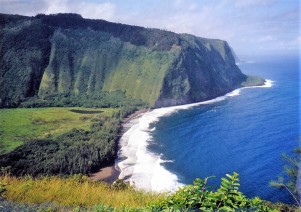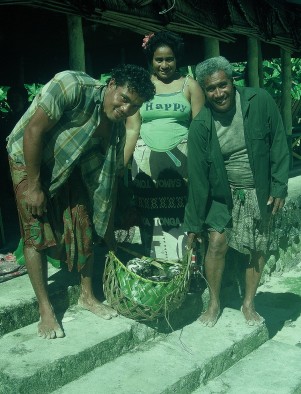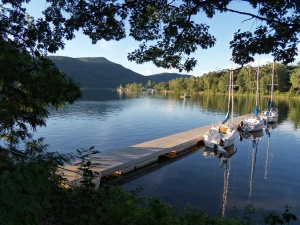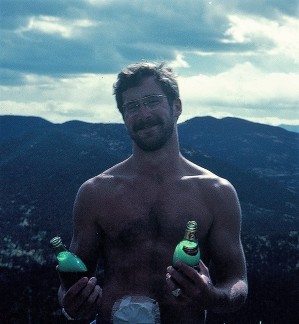One of the bills that has come out of the recently concluded legislative session is SB 2699, which proposes to make “resort fees” subject to our Transient Accommodations Tax (TAT).
A “resort fee,” which also goes on your bill if you stay at a hotel, and not only in Hawaii but around the world, is to pay for other amenities such as use of the hotel’s weight room, or pool, or Wi-Fi internet service.
“Oh?” you might say. “I thought those things were included in the room rate.”
That’s precisely the point, both for the hotels and the Tax Department. The TAT is 10.25% of the gross room rate. Our supreme court has said, “in determining tax liability it is fundamental that substance, rather than the form of the transaction, governs. Actualities and consequences of a commercial transaction, rather than the method employed in doing business, are controlling factors in determining such liability.” In re Kobayashi, 44 Haw. 584, 358 P.2d 539 (1961). Thus, if a “resort fee” is actually a piece of the room charge, by any other name, then it’s taxable as a room charge.
One of the tests that the Department is now using to figure out if a resort fee is a room charge with another name is whether the charge is “mandatory.” If the fee is not part of the room charge, then a guest staying at a hotel should be able to opt out of it.
Some of the bills that were going through the session, such as HB 2432 SD 1, would define a “resort fee” subject to the TAT as: “any mandatory charge or surcharge imposed by an operator, owner, or representative thereof on a transient for the use of the transient accommodation’s property, services, or amenities.” That definition doesn’t seem to be different from what the Department was already enforcing, so there wouldn’t be much harm in enacting that version. That bill died.
SB 2699, the one that passed, defines a resort fee as “any charge or surcharge imposed by an operator, owner, or representative thereof to a transient for the use of the transient accommodation’s property, services, or amenities.”
Whoa there! Wouldn’t that make pretty much anything on the hotel bill a resort fee? Suppose you watch an in-room movie and get billed for it. Isn’t that a charge for one of the hotel’s amenities, namely the in-room TV and movie system? What about a charge for a meal? If you were to eat in your room, or even in the hotel restaurant, for that matter, isn’t the meal charge for the hotel’s property (food), services (servers), and amenities (in your room, or in the hotel restaurant)? This certainly was not the intent of the TAT when it was enacted, and it would be far different from most hotel room taxes across the country and internationally if the tax is applied in this manner.
Apparently, some lawmakers were unhappy that the TAT was not being applied to resort fees even if they were shown to be truly optional charges for things other than a transient room rental. So, this bill lurches in the other direction. It’s a reactionary reaction. Is this really what we want for our TAT system?






















Is this the end for the Waikiki Beach Boys? Hawaiian OCEAN’S Waikiki Comments on Concession Contracts
On Tuesday May 15, 2018 the City plans to evict Hawaiian Ocean’s Waikiki from the Kuhio Beach concession stand that it operates.
Every five years, the stand owners have to bid for a contract with the city of Honolulu. This time, Dive Oahu was awarded both concessions. After awarding Dive Oahu both concession stand contracts, the City is proceeding its process to replace two long-time concessionaires (Star Beachboys and HawaiianOcean’s Waikiki) despite several legal challenges pending.
A petition titled “Don’t let the beach boy culture die” is being shared on social media and collected over 2000 signatures in 12 hours. A Beach Boy rally is scheduled at 5am by the statue the morning of the takeover.
A Facebook post made by Brian Benton of Dive Oahu has also been shared, sparking outrage from locals.
“My husband and brother in law are Waikiki Beach Boys. They are from the old regime of Beach Boys that earned their position by putting their time in at the beach. Back in the day the job and title of Beach Boy was a privilege, not a right. And it was earned the hard way. That meant raking the beach before school and helping break down and clean up at the end of the day.” Jennifer Yoon Sisiam
“They do it because Waikiki Beach Boys are consummate water men (and women and boys and girls) who embraced a holistic view of care and respect for the oceans and shorelines well before the word holistic was coined. I know this because my father taught it to me, and because my beach “uncles” lived it in front of me,” said Lisa Waipi’o Werner. “Because many lives have been saved. Because there is no more authentic and beloved ambassador for Hawai’i. Because the Beach Boy Tradition is singular and sacred and should be honored. This is what Hawaiian tradition teaches us about our cherished values and the people who carry them from generation to generation.”
Statement from the company:
“Hawaiian Ocean’s has been a concessionaire on Kuhio Beach for over 13 years. In 2017, the City erred on a decision to award Dive Oahu one concession stand on Kuhio Beach. After Hawaiian Ocean’s disputed the award in court, the process was nullified. Immediately after this decision, the City hastily re-categorized the process and re-worded parts of it. Dive Oahu was awarded a contract for both concession stands. There were no public hearings to correct the process’ initial errors. Hawaiian Ocean’s is concerned by the City’s lack of transparency and due process. No company has ever held two long-term contracts for the Kuhio Beach concession stands simultaneously.
“Dive Oahu has agreed to pay 52.5% of its monthly gross revenues relating to beach activities on Kuhio Beach. The City determined Dive Oahu was qualified to bid due to its “Ocean Recreation Sales Revenue.” These sales do not reflect experience required to responsibly offer surf lessons, outrigger canoe-rides, and operate a beach concession stand in Waikiki. Previous contracts qualified bidders based upon experience with surf lessons, canoe rides, and other activities specific to Waikiki and its traditions.
“In a meeting with prospective employees, Dive Oahu stated their plans to sell tour packages, such as luaus, dives, and all other activities listed on its website. They plan to do so with employees walking around the beach in khakis, polo shirts, and tennis shoes using iPads and offering a 3% commission on these sales. Prices on their website are all listed in excess of $159 to $99, except for a “Fireworks Cruise” listed at $75. These sales are permitted due to a change in language in the contract that permits vaguely categorized “Ocean Recreation Activities.” Previous contracts specified that revenues must be generated through surf lessons, photos, canoe rides, and surf board, boogie board, umbrella, and chair rentals. In the past, Hawaiian Ocean’s Waikiki and Star Beachboys has been prohibited from selling anything – attempts to sell sunscreen and rash guards were immediately halted.
“Hawaiian Ocean’s believes in a fair and legal bid process.”
Hawaiian Ocean’s Waikiki, Inc. was founded in 2002. It has always been locally owned and operated. Its president is Hubert Chag.